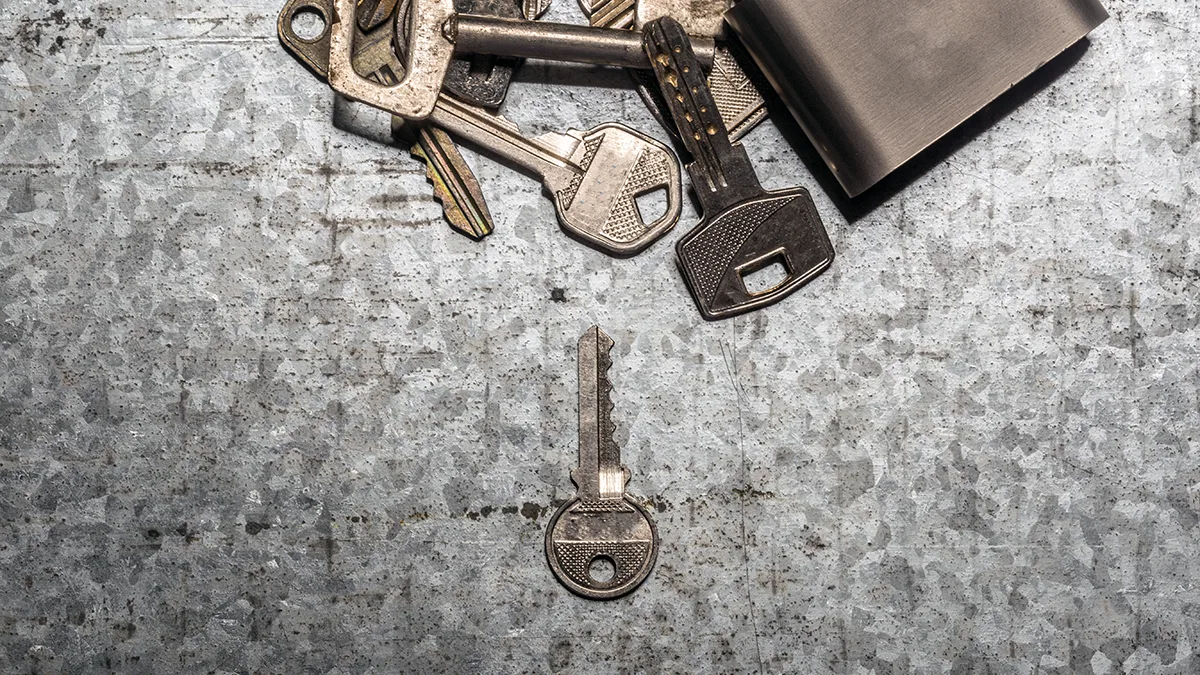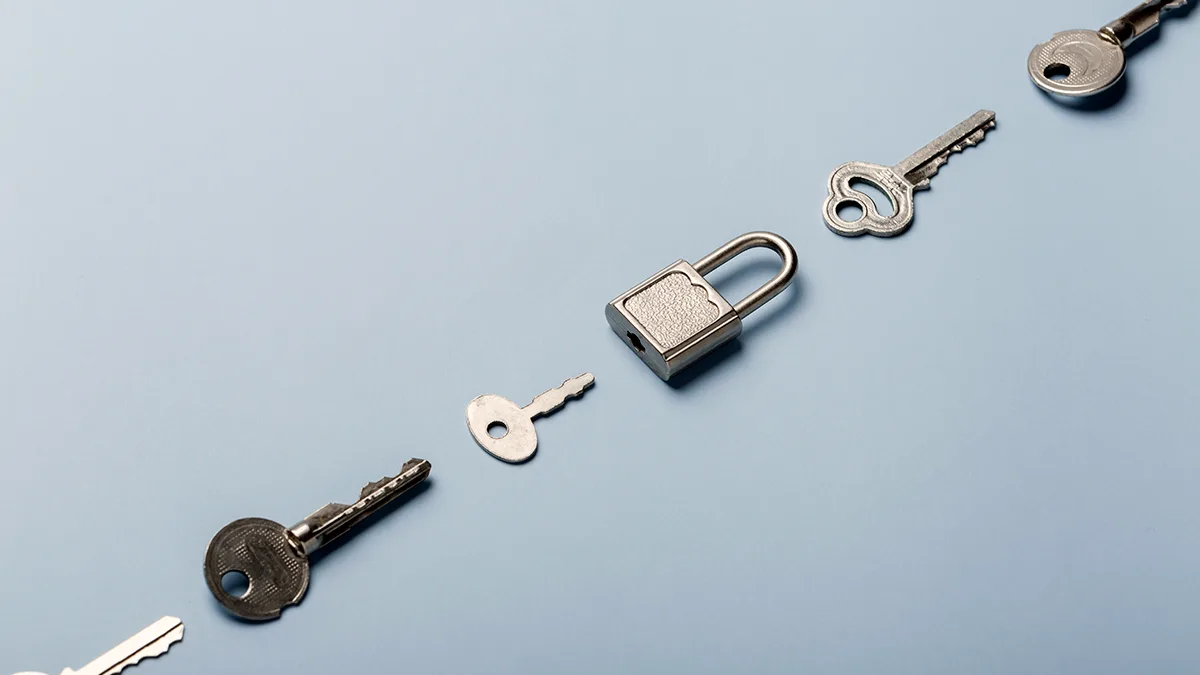The Hidden Costs of DIY Lock Repairs and How to Avoid Them. In a bustling city…
DIY Lock Solutions: A Trusted Guide for Unlocking a Stuck Key
DIY lock solutions: A trusted guide for unlocking a stuck key. When faced with the frustrating predicament of a key stuck in a lock, it’s essential to know how to address the situation efficiently and safely.
Many homeowners and renters in London encounter this common issue, often when least expected, leaving them feeling helpless.
Fear not, as this guide offers DIY lock solutions that can help you understand how to remove a key from a lock without causing damage.
DIY Lock Solutions
By following our expert locksmith tips, you will gain the confidence needed to tackle such challenges on your own, while also recognising when it’s time to call in professional help.
Our trusted advice ensures you can approach unlocking a lock with assurance and reliability, safeguarding your property and peace of mind.
Understanding the Problem
Causes of a Stuck Key
A key stuck in a lock can stem from various causes, each requiring a different approach to resolve.
One common culprit is dirt and debris accumulation within the lock mechanism, which can impede the smooth insertion and removal of the key.
Over time, dust and grime build-up can obstruct the internal pins and tumblers.
Another cause may be a misaligned or worn-out key, especially if the key has been used repeatedly or improperly.
Additionally, the lock itself might be faulty due to rust or damage, leading the internal components to jam.
Cold weather conditions can also cause metal components to contract, making it difficult for the key to turn.
Understanding these causes is crucial for determining the best DIY lock solution and deciding how to remove a key from a lock efficiently.
Recognising these signs early can prevent further complications, saving time and effort.
Common Lock Types and Issues
Understanding the type of lock you are dealing with can help in addressing a key stuck situation.
Pin tumbler locks, often found in residential properties, are prone to sticking due to internal debris or misaligned pins.
Deadbolt locks, while providing increased security, can jam if the bolt gets caught within the strike plate.
Mortice locks, common in older buildings, may experience issues due to wear and tear or rust.
Cylinder locks, used frequently in commercial settings, can be sensitive to temperature changes which might affect their operation.
Each lock type presents unique challenges when unlocking a lock, making it vital to know the specific characteristics and common issues associated with them.
Identifying these problems early aids in employing the correct DIY lock solutions, ensuring that you can remove a key from a lock without causing further damage.
This knowledge also helps in determining when professional locksmith tips and intervention might be necessary.
DIY Lock Solutions
Tools You’ll Need
To effectively tackle a key stuck in a lock, having the right tools at hand is crucial.
Start with a lubricant such as graphite powder or a silicone-based spray to reduce friction within the lock mechanism.
Avoid using oil-based lubricants as they can attract dust. A pair of pliers can be handy for gently pulling the key without applying excessive force.
A flathead screwdriver may assist in realigning any misaligned lock components. If the key is partially out, a broken key extractor tool can be particularly useful for removing it.
Additionally, having a flashlight can help illuminate the lock’s interior, allowing you to better see what you are doing.
These tools are essential for any DIY lock solutions aimed at how to remove a key from a lock safely.
Being prepared with these items ensures you can approach unlocking a lock with confidence and efficiency.
How to Remove Key from Lock
Removing a key stuck in a lock requires patience and precision. Begin by gently wiggling the key while applying a small amount of lubricant into the lock.
This can help loosen any debris hindering the key’s movement.
If the key remains stuck, use pliers to grasp the key firmly but avoid applying excessive force, as this might break the key.
If the key is broken inside, a broken key extractor tool can be inserted into the lock to hook and remove the key fragment.
For a more stubborn situation, a flathead screwdriver might assist in realigning the lock pins by gently turning the lock cylinder.
It’s important to avoid forcing the key out, as this can cause further damage.
By carefully following these steps, you can efficiently address the issue and successfully unlock the lock without professional intervention.
However, if these techniques fail, seeking professional locksmith tips might be necessary.
Professional Locksmith Tips
When to Call an Expert
While DIY lock solutions can resolve many issues, there are times when calling a professional locksmith is the safest option.
If you’ve attempted to remove a key stuck in a lock multiple times without success, it might indicate a more serious problem within the lock mechanism.
Additionally, if the key breaks inside the lock and fragments remain lodged deep, professional tools and expertise are likely required to retrieve them without damaging the lock.
Locks that are rusted or severely worn may also need replacement rather than repair, necessitating professional assessment.
Furthermore, if you’re dealing with high-security locks, attempting DIY fixes might compromise their integrity.
Recognising when to call an expert ensures that your locks remain functional and secure.
Professional locksmiths not only provide efficient solutions but also offer valuable locksmith tips for future prevention.
Seeking expert help can save time and prevent further complications, ensuring peace of mind.
Preventing Future Lock Issues
Preventative measures can significantly reduce the likelihood of encountering a key stuck in a lock.
Regular maintenance is key; periodically clean your locks with a suitable lubricant to keep internal mechanisms smooth and debris-free.
Avoid using worn or bent keys, as they can exacerbate wear on the lock.
Consider replacing old locks with modern, more durable options that are less prone to jamming.
During colder months, be mindful of temperature effects on metal components, and use de-icing solutions if necessary.
Also, ensure that door frames and strike plates are properly aligned to prevent undue stress on the lock.
If moving into a new property, rekeying or replacing the locks can preclude unforeseen issues.
By following these professional locksmith tips, you can maintain the integrity of your locks, ensuring they function reliably and efficiently.
Proactive care not only extends the lifespan of your locks but also enhances the security of your property.




Comments (0)